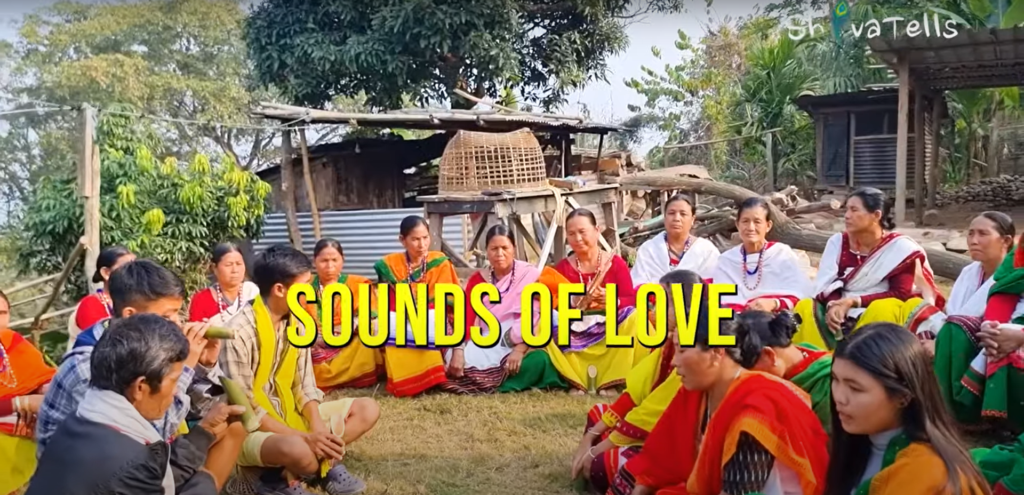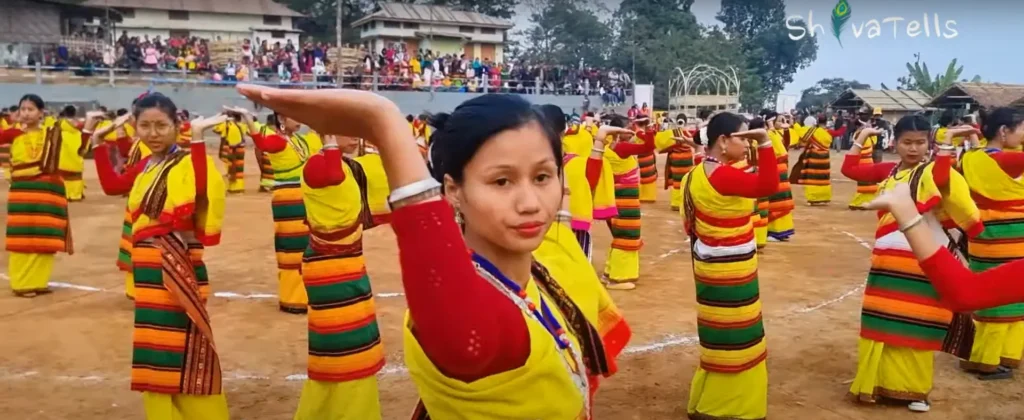Majak! (Listen up!) O janamora [our dear] travel crew! your Shiva is here, back with another bhol [amazing] story straight outta Asomar mon [Assam’s heart], this time filled with Prem gaan (love songs), Dimasa janajati [Dimasa tribe], and the mesmerizing Majang Di tradition! We are venturing into the mind-blowing Dima Hasao district, Asom’s one and only hill station, and believe me, it’s just like stepping into a bit of Scotland, right here in our own Bharat [India]!
But wait kor [hold on], there’s more to Dima Hasao than just hills and suhag hawa [pleasant weather]. This place holds a bhoyankar [hidden] gem – a tradition that will leave you spellbound and wanting to know more about the Dimasa janajati’s rich sanskriti [culture]. Kamarbondha ne [Buckle up], travel fam, because we are about to unveil the jaadu [magic] of Majang Di!
Table of Contents
What’s the Majangdi Di?

Let’s rewind a bit. Back in the day, during the June cultivation season, young hearts would find themselves working side-by-side in the fields of Gunjung village. And you know what happens when you throw young people together, right? Sparks fly! That’s exactly what happened in these fields. Love blossomed, and Majangdi became their special way of expressing it.
What About the Dimasa Tribe?
Hold your horses there, travel fam! Before we dive into Majangdi, let’s talk about the incredible Dimasa tribe, the heart and soul behind this tradition. The Dimasa people are an ethnolinguistic community with a rich history dating back centuries. They live primarily in Assam and Nagaland, and their language, Dimasa, belongs to the Tibeto-Burman family. They’re known for their agricultural skills, their vibrant culture, and their deep connection to the land.
So, how do the Dimasa tribe connect to Majangdi?
The Dimasa people have always been a close-knit community, and Majangdi was a way for young hearts to connect during the June cultivation season. It was a celebration of love, music, and wit, all woven into the fabric of their daily lives.
Now, let’s get back to our story…
Imagine this: young hearts working side-by-side in the fields. Sparks fly faster than fireflies on a summer night! That’s exactly what happened in these fields. Love blossomed between the youngsters, and Majangdi became their way of expressing their feels in a way that would make even Shakespeare jealous.
Think Musical Love Duel!

Here’s where things get interesting. Picture a scene straight out of a Bollywood movie (minus the elaborate dance sequences – for now). The boys would belt out their hearts, serenading their chosen girl with beautiful songs. These weren’t just your average lovey-dovey tunes; they were promises, declarations of what the boy would do for his beloved. But hold on, these girls weren’t falling for sweet talk so easily! They’d challenge the boys with witty or funny questions, testing the sincerity of their love. And let me tell you, the cleverer the response, the louder the cheers from the crowd.
Think Musical Love Songs, Not Reality TV
Forget the cheesy lines and staged drama of reality TV dating shows. Majangdi was a musical love duel, way cooler than anything you’ve seen on Netflix. The boys would become human serenaders, pouring their hearts out in beautiful songs for their chosen girl. These weren’t just your average lovey-dovey tunes; they were promises, declarations of what the boy would do for his beloved. Think “I’d climb the tallest tree in Dima Hasao and pick you the ripest jackfruit” kind of stuff. But hold on, these girls weren’t falling for sweet talk so easily! They’d challenge the boys with witty or funny questions, testing the sincerity of their love. And let me tell you, the cleverer the response, the louder the cheers from the crowd.
Imagine a scene straight out of a Bollywood movie, minus the elaborate dance sequences (for now). Picture the boys belting out their love songs, the girls throwing playful challenges, and the whole village buzzing with excitement. It was like a giant open-air concert meets a hilarious roast session, all fueled by Johar, the local rice wine. This musical jousting would go on for hours until a decision was made – either the couple agreed to be together, or they remained just friends (or should I say, brother and sister, as that’s how they addressed each other during this whole process).
More Than Just Mushy Songs: A Cultural Gem

But Majangdi isn’t just about love songs; it’s about a rich cultural heritage that’s like a museum exhibit come to life. The songs are accompanied by the soulful tunes of the Muri, a traditional Dimasa flute that sounds like the whispers of the hills themselves. The famous Bihu dance of Assam is also believed to have stemmed from the graceful movements of the Baidema dancers, whose steps perfectly complement the Muri’s melodies. Watching a Bihu performance is like witnessing a story unfold – a story narrated through the flute and expressed through the dancers’ steps. It’s a beautiful blend of music, movement, and storytelling that will leave you mesmerized.
A Treasure Fading Away
Here’s the not-so-happy part, folks. This beautiful tradition, like many others, is slowly fading away. There are only a handful of people who truly understand the art of Majangdi and Bihu dance in their purest forms. This is why it’s important to experience these cultural gems firsthand if you ever find yourself in Dima Hasao. Talk to the locals, learn about their traditions, and witness the magic for yourself.
How to Reach Gunjung Village, Assam?
Gunjung village is located in the Dima Hasao district of Assam, and the closest major town is Haflong. Here’s how to reach Haflong:
- By Air: The nearest airport to Haflong is the Lokpriya Gopinath Bordoloi International Airport in Guwahati (approximately 290 km away). From Guwahati, you can take a taxi or cab to Haflong.
- By Train: The nearest major railway station is in Guwahati. From Guwahati, you can take a train to Haflong or any other nearby station and then hire a taxi or cab to reach Gunjung village.
- By Road: Haflong is well connected by road to other parts of Assam and neighboring states. You can take a bus or hire a taxi to reach Haflong from any major city in Assam.
Once you reach Haflong, you can inquire about local transportation options to reach Gunjung village. These might include shared taxis, jeeps, or private vehicle.
Other stories from Assam
- This Man from Assam lives and loves ORCHIDS!
- Strange Indian TRADITIONS | Rare Turtles are offered in this TEMPLE of ASSAM
